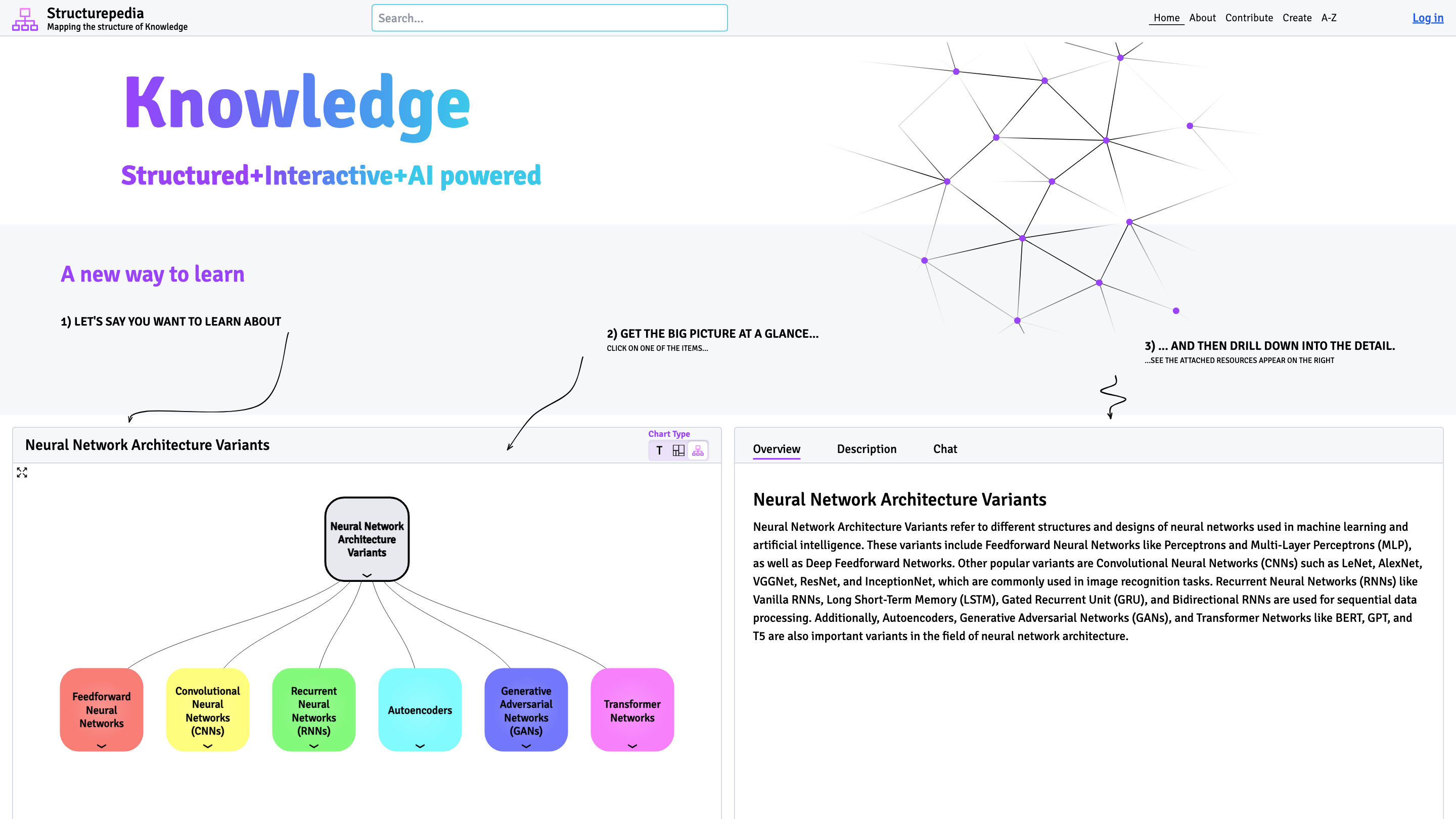Structurepedia
Open siteResearch & Data Analysis
Introduction
Hybrid search engine and encyclopedia
Structurepedia Product Information
Structurepedia: Mapping the Structure of Knowledge is an AI-powered, interactive knowledge platform designed to present topics as structured diagrams and knowledge trees. It emphasizes a big-picture overview with drill-down detail, letting users click items to reveal attached resources and deeper layers of information. The system promotes an encyclopedic, AI-assisted approach to learning, aiming to mimic how people internally organize knowledge rather than just listing linear text.
How Structurepedia Works
- Start with a topic of interest (e.g., Neural Network Architecture Variants).
- View the big picture at a glance and click on an item to drill down into the detail.
- Access attached resources appear on the right to expand understanding without scrolling through long articles.
This creates an interactive, structured learning experience that highlights relationships and hierarchies within a topic.
Example Topic: Neural Network Architecture Variants
- Neural Network Architecture Variants refer to different structures and designs of neural networks used in machine learning and artificial intelligence.
- Includes Feedforward Neural Networks (Perceptrons, Multi-Layer Perceptrons), Deep Feedforward Networks, Convolutional Neural Networks (CNNs) such as LeNet, AlexNet, VGGNet, ResNet, InceptionNet, used for image recognition tasks.
- Recurrent Neural Networks (RNNs) like Vanilla RNNs, LSTM, GRU, and Bidirectional RNNs for sequential data.
- Autoencoders, Generative Adversarial Networks (GANs), and Transformer Networks (BERT, GPT, T5) as additional variants.
The Structurepedia Vision
- Layer AI: Treat Structurepedia as the evolution of online encyclopedias and search engines for the AI era. Information is ubiquitous, and structure helps make sense of it.
- Contribution Model: Structurepedia relies on voluntary contributors to build and refine structural diagrams (e.g., Types of clouds, Suez Canal, popular DAWs in music production) and grow a freely accessible knowledge tree encyclopedia.
- Create & Generate: Users can generate improved query formulations with StructureBot and follow a contributor guide to add content.
- Philosophy & Learning: The platform emphasizes that learning benefits from understanding structure rather than memorizing linear lists, aligning with how knowledge is stored in human cognition.
How to Contribute
- Follow the contribution guide to add new structural diagrams and topics.
- Use StructureBot for improved query formulation suggestions before contributing.
- Respect the Creative Commons Attribution-ShareAlike license for shared content.
Safety and Licensing
- Content is available under Creative Commons Attribution-ShareAlike.
- It is important to attribute sources and share derivations under the same license terms.
Core Features
- Interactive, structured diagrams that reveal the big picture and drill-down details
- Attached resources appearing on the right to supplement each topic
- AI-powered guidance for query formulation and learning pathways
- Community-driven content with a permissive Creative Commons license
- Encourages non-linear, structural learning over linear text
- Wide-ranging topics beyond neural networks, including diverse domains
- Free-to-access encyclopedia of structural diagrams with ongoing growth
